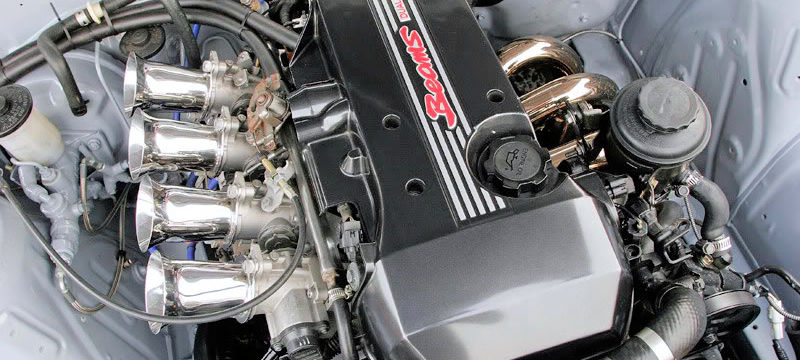So I’m going to do something a little different today. I’m going way outside of my comfort zone and treating this blog like a high school report. I am going to write about something that I am substantially unfamiliar with but find interest in: individual throttle bodies on a standard combustion engine. I preface this–I am by no means an expert when it comes to the innerworkings of exactly how the combustion engine operates, but I have great interest in it from a hobbyist perspective.
I freely admit that its a little sad since the world seems to be pointing towards fully electric motors for powering today and tomorrow’s automobiles. You may find it as a surprise that I own ZERO vehicles that have any sort of automated transmission, whether CVT, AT, DCT, or fully electric (no transmission). ALL of my cars feature the antiquated standard/manual transmission. I suppose I’m living in the past!
So back to the topic at hand. I’ll briefly reference that the four-stroke combustion engine includes 4 phases: intake, compression, power/combustion, and exhaust. Individual throttle bodies, or ITB, are related to the intake phase of the cycle. A throttle body is commonly found after the air filter and before the intake manifold, and it is used to control the passage of clean air into the intake manifold for use during the following cycles. This air flowing into the intake manifold is shared across all cylinders. You can reference this Engineering Explained video for much more detail:
The main thing to understand about combustion engines is that they need air, fuel, spark, and compression to efficiently operate. If you want more power, you typically work to increase these factors to that end. Common methods used for more power are to increase the air quantity/density coming into the motor. For instance, cooler air is denser, allowing more air mass into the combustion chamber. Supercharger and turbocharger systems are a couple popular methods to improve intake air density in motors. At seventeen years old, I improved the quantity of air coming into my 1999 Mitsubishi Galant by purchasing an aftermarket air intake and bolting it up instead of the more restrictive factory intake. I’m unsure of how much power I gained in doing so, but I certainly loved the sound it made when the throttle opened up!
So what individual throttle bodies gain for me is similar–the sound made is much more pronounced given automobile engineers typically design most cars to be as quiet as possible. ITBs notedly improve throttle response since air no longer has to traverse the intake manifold in order to reach the combustion chambers during open throttle–and who doesn’t like a responsive throttle! Check out this video as again, Jason Fenske explains it better…
These ITBs are also referred to as ram tubes, velocity stacks, or intake trumpets.
So once you start playing dramatically with the ratios of air, fuel, spark, or compression you run the risk that the factory ECU will not react properly to the new ratios, requiring tuning and standalone EMS. For example, introducing more air than factory spec while maintaining all other levels can lead to the engine running lean, meaning there is not enough fuel making it to the combustion chamber for optimum power. More fuel is required for optimum power, meaning the ECU will need to be tuned to expect more air and accommodate by sending more fuel. Alternately, more fuel in the combustion chamber versus air leads to the car running rich. You always must remember that the engine is a complex system designed over a significant period of time by skilled experts for mass production… although I also wonder if these experts over time programmed smarter, more dynamic ECUs. I suppose it just depends on the car.
My interest in ITBs was a result of my research into the 4AGE motor. Investigation into both 4AGE and 3SGE motors lead me to find many builds with ITBs. Honestly, its the sound they make that intrigues me so much…
Here is a (Hoonigan) build breakdown featuring a classic 1st generation Toyota Celica with the BEAMS (blacktop) 3SGE motor swapped and ITBs:
Here is a build with a Corolla 4AGE with ITBs:
I imagine most tuner-friendly motors have aftermarket support for ITBs, but there is much more for me to learn in regards to other motor builds…
